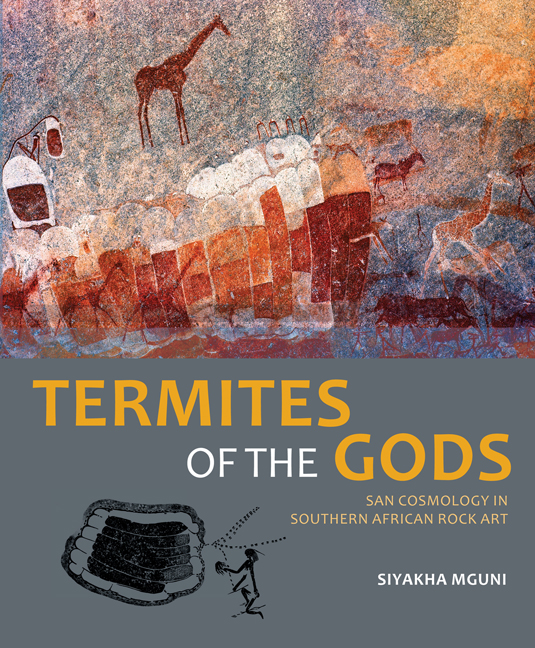Book contents
- Frontmatter
- Dedication
- Contents
- Acknowledgements
- Foreword
- Maps
- Explanatory notes
- Preface: Searching the pasts
- Introduction
- Chapter 1 Ancient mysteries on rocks
- Chapter 2 Meaning in San rock art
- Chapter 3 Tricksters, potency and dance
- Chapter 4 Ways of seeing San rock art
- Chapter 5 Probing deep into formlings
- Chapter 6 Formlings and San cosmological belief
- Chapter 7 Symbolic theatres of San cosmos
- Notes
- List of maps and figures
- Picture credits
- References
- Index
- Frontmatter
- Dedication
- Contents
- Acknowledgements
- Foreword
- Maps
- Explanatory notes
- Preface: Searching the pasts
- Introduction
- Chapter 1 Ancient mysteries on rocks
- Chapter 2 Meaning in San rock art
- Chapter 3 Tricksters, potency and dance
- Chapter 4 Ways of seeing San rock art
- Chapter 5 Probing deep into formlings
- Chapter 6 Formlings and San cosmological belief
- Chapter 7 Symbolic theatres of San cosmos
- Notes
- List of maps and figures
- Picture credits
- References
- Index
Summary
Rightly, Siyakha Mguni, the author of this beautiful and stimulating book, feels that he has ‘uncovered certain hidden mysteries of the San spiritual universe’. Modestly, but again rightly, he adds that he has ‘likely only partially uncovered the possible layers of symbolism’ of his chosen foci – the so-called ‘formlings’ and trees, two hitherto little understood components of a fascinating southern African art.
Insights of this importance do not come suddenly and out of nowhere. Rather, they are milestones along a road with many ups and downs. Discovery, it is said, favours the prepared mind. ‘Mind preparation’ itself is a long and sometimes arduous task. Siyakha gives us glimpses of his journey, which began in 1978 in the Matopo Hills of Zimbabwe, a beautiful region of southern Africa that has been marked by terror and violent clashes as well as delicate images from a bygone age. He found that the ‘place and its tranquil ambience evoke deep time’.
In such situations it is easy to surrender oneself to the contemplation of beauty and also to the puzzles that the more enigmatic images imply. For some, it is almost sacrilege to probe for and expose ‘hidden mysteries’. Are we trespassing on sacred ground, intruding into the innermost thoughts of long gone people? Should we not simply allow the mystery to endure?
Siyakha's personal journey has enabled him to bridge what some people see as a dichotomy. He can, and we feel it on page after page, marvel at the subtlety of thought and beauty of line that we see in the paintings he has chosen for reproduction and, at the same time, lead us to an understanding of what the images meant for those who made them so long ago. Knowledge of how a flower ‘works’ botanically need not erase our sense of wonder. On the contrary, our wonder grows as we learn more and more.
In this book, Siyakha's ‘flowers’ are rock art images that are prominent in Zimbabwe but enigmatic. Some are oval patches of paint, sometimes joined in long lines; several have added details. These are the so-called formlings. Believing that the art was a direct representation of what the San saw around them, some earlier writers thought the oval forms depicted the Victoria Falls, grain bins, shields or other objects that people saw daily.
- Type
- Chapter
- Information
- Termites of the GodsSan cosmology in southern African rock art, pp. x - xiPublisher: Wits University PressPrint publication year: 2015



